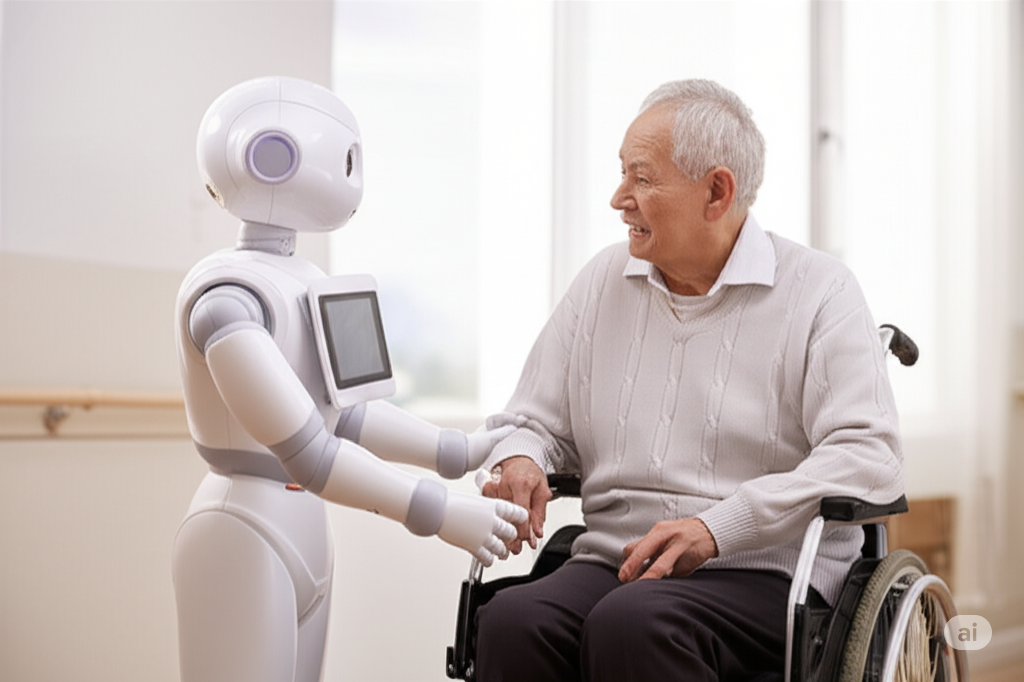In nursing homes across Japan, Europe, and even parts of the United States, the future has quietly arrived. Humanoid robots are helping elderly residents get dressed. Robotic pets are improving mood and reducing loneliness. AI-powered wristbands are automatically alerting staff to falls or health emergencies—sometimes before they even happen.
These innovations aren’t prototypes. They’re part of real-world pilot programs addressing one of the most pressing challenges in modern healthcare: the global shortage of eldercare workers.
As the elderly population continues to grow rapidly, care facilities are turning to robotics and artificial intelligence not just for efficiency—but to restore dignity, safety, and emotional well-being to aging residents.
The Rising Need for Innovation in Eldercare
According to the World Health Organization, the number of people aged 60 and older will double by 2050, reaching 2.1 billion globally. Meanwhile, the number of available caregivers—both professional and informal—is shrinking due to labor shortages, burnout, and declining birth rates in many regions.
The result? Many nursing homes are overwhelmed, under-staffed, and struggling to maintain consistent, high-quality care.
Enter: robotics and AI.

What Robotic Eldercare Looks Like Today
1. Humanoid Robots for Assistance
Robots such as Japan’s Robear and Mira Robotics’ UGO are designed to help elderly residents stand up, transfer from beds to wheelchairs, and perform daily hygiene tasks. These robots reduce physical strain on human caregivers and lower the risk of injury for patients and staff alike.
2. Companion Robots and Robotic Pets
Devices like Paro, a robotic baby seal used in Europe and the U.S., or Sony’s Aibo robotic dog, have been shown to significantly improve emotional well-being in dementia patients. These companions can respond to voice, touch, and even adapt their behavior to residents’ moods.
3. Smart Wearables and AI Wristbands
Wearable tech integrated with AI can monitor vital signs such as heart rate, temperature, and movement patterns. If the system detects signs of a fall, dehydration, or unusual behavior, it alerts staff instantly—sometimes even before a critical event occurs.
4. AI-Powered Cleaning and Safety Monitoring
Autonomous robots now clean rooms, disinfect surfaces, and navigate hallways using sensors and mapping tools. AI algorithms also analyze video surveillance to detect when a resident may be in distress or wandering unsafely.
Benefits Beyond Labor Savings
While the most obvious benefit is reducing the burden on caregivers, the impact goes much deeper:
- 24/7 monitoring: Robots don’t take breaks, call in sick, or lose focus. They can support night shifts and monitor residents continuously.
- Reduced falls and hospitalizations: Early detection of balance issues or changes in gait reduces injuries and hospital admissions.
- Improved mental health: Robotic pets and conversational AI reduce feelings of isolation and loneliness, especially in residents with limited family contact.
- More human time for caregivers: With robots handling routine tasks, human staff can spend more time on emotional support and individualized care.
Limitations and Concerns
Despite the promise, robotic eldercare is not without its challenges:
- Cost: Advanced robots can be prohibitively expensive for smaller care facilities.
- Privacy: Continuous monitoring and data collection raise concerns about resident privacy and consent.
- Emotional complexity: Critics argue that robotic pets or companions may offer a false sense of companionship and reduce human interaction.
- Technical limitations: Robots still struggle with nuanced tasks that require emotional intelligence or cultural understanding.
Moreover, some caregivers fear that automation may replace, rather than supplement, human roles—though current trends suggest a partnership model, not a replacement.
Global Examples: Where It’s Already Happening
- Japan: With one of the world’s oldest populations, Japan has embraced eldercare robotics in over 8,000 facilities. Government subsidies help nursing homes afford robotic assistants.
- Sweden: AI-based fall detection systems and robotic medication carts are now part of some assisted-living centers.
- United States: Pilot programs in states like California and Florida are exploring AI wearables, smart speakers, and robotic mobility aids in senior communities.
Looking Ahead: The Hybrid Model of Care
The future of eldercare is not robotic vs. human—it’s robotic and human.
AI and robotics can enhance care by managing repetitive or physically demanding tasks, allowing caregivers to focus on what they do best: empathy, comfort, and human connection. For residents, this could mean safer, more personalized, and more emotionally rich care in their final years.
As the demand for eldercare grows—and the workforce shrinks—embracing technology might not be a luxury, but a necessity.

Leave a Reply